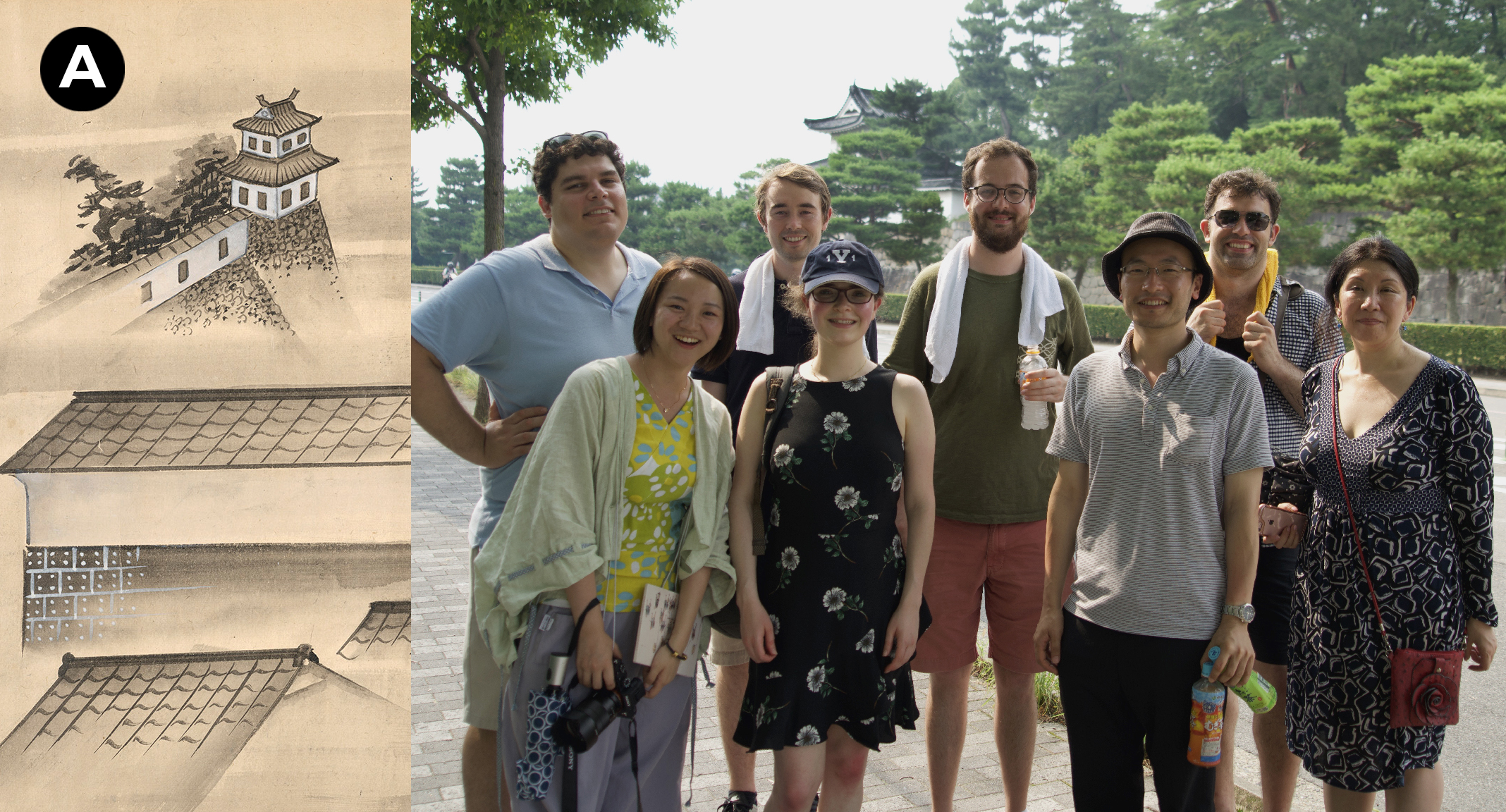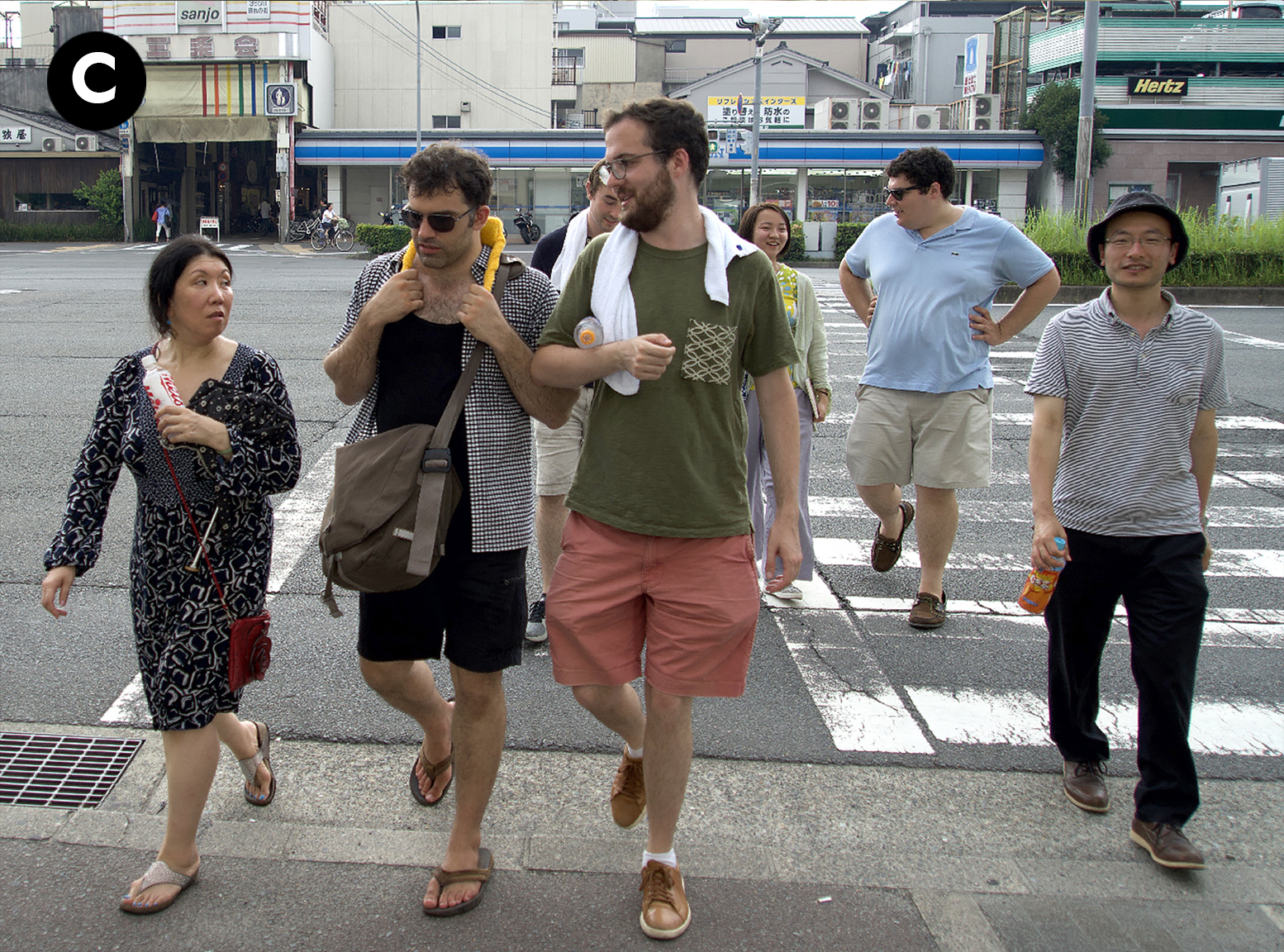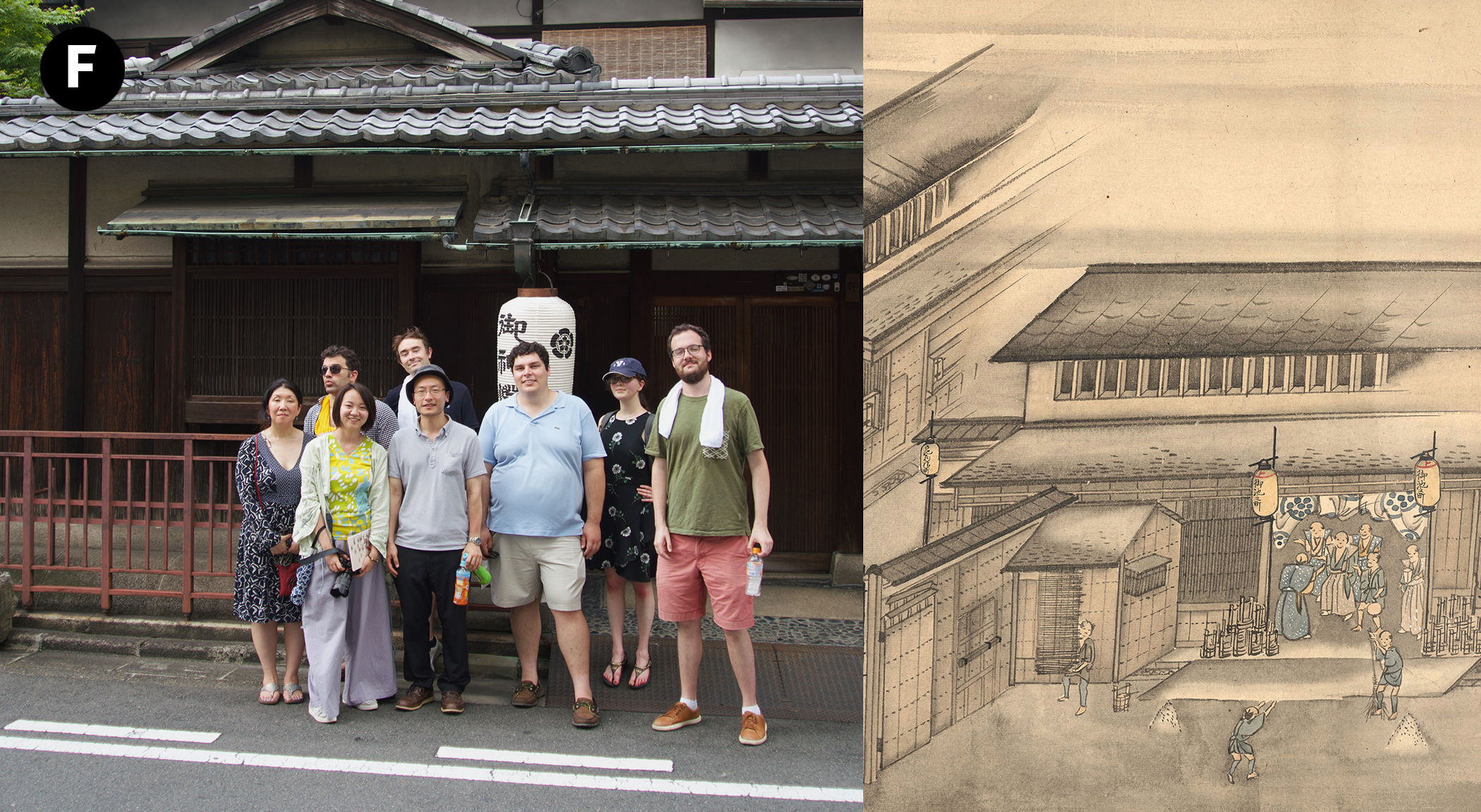-

Yale librarian, Haruko Nakamura, with graduate students, Bo Tao, Joanna Linzer, Zekun Zhang (front, right to left)) Alexander Schweinsberg, John D’Amico, Thomas Monaghan, and George Remisovsky (back, right to left), preparing to walk the procession route depicted in the Kyoto Komonjo scroll in July 2018. Our starting point is close to the location of the Eastern Town Magistrate’s Offices during the Edo period. Note the white turret from Nijō Castle in the background. This corresponds to the turret depicted in the final section of the scroll.
-

The first part of the procession route is today a nondescript shopping arcade.
-

What was still the Horikawa river at the time of the 1818 procession was later filled in to create Horikawa Dōri, a major road that today carries a steady stream of traffic through the city.
-

Fortunately, the neighborhood of Kamanza-chō, where Ishiguro Mitsunori lived, still retains some traces of its past, including several machiya-style houses reminiscent of the Edo period. The old kettle maker’s sign shown on the main essay page stands direcly across the street from where this photograph was taken, in front of the Onishi Seiwemon Museum
-

The Eirakuya cloth store, where this photograph was taken, was founded in 1615. It would have borne witness to the original procession when it took place in 1818. It was still there two hundred years later when we walked the route.
-

Although it is now cut off from the other neighborhoods of the old Upper Northeastern Federation by the busy flow of traffic along Oike Dōri, the neighborhood of Oike-no-chō, where the “Revered Documents” were first brought for safe keeping in 1818, still retains some sense of connection to its past. (July in Kyoto is hot!)

 Yale librarian, Haruko Nakamura, with graduate students, Bo Tao, Joanna Linzer, Zekun Zhang (front, right to left)) Alexander Schweinsberg, John D’Amico, Thomas Monaghan, and George Remisovsky (back, right to left), preparing to walk the procession route depicted in the Kyoto Komonjo scroll in July 2018. Our starting point is close to the location of the Eastern Town Magistrate’s Offices during the Edo period. Note the white turret from Nijō Castle in the background. This corresponds to the turret depicted in the final section of the scroll.
Yale librarian, Haruko Nakamura, with graduate students, Bo Tao, Joanna Linzer, Zekun Zhang (front, right to left)) Alexander Schweinsberg, John D’Amico, Thomas Monaghan, and George Remisovsky (back, right to left), preparing to walk the procession route depicted in the Kyoto Komonjo scroll in July 2018. Our starting point is close to the location of the Eastern Town Magistrate’s Offices during the Edo period. Note the white turret from Nijō Castle in the background. This corresponds to the turret depicted in the final section of the scroll. The first part of the procession route is today a nondescript shopping arcade.
The first part of the procession route is today a nondescript shopping arcade. What was still the Horikawa river at the time of the 1818 procession was later filled in to create Horikawa Dōri, a major road that today carries a steady stream of traffic through the city.
What was still the Horikawa river at the time of the 1818 procession was later filled in to create Horikawa Dōri, a major road that today carries a steady stream of traffic through the city. Fortunately, the neighborhood of Kamanza-chō, where Ishiguro Mitsunori lived, still retains some traces of its past, including several machiya-style houses reminiscent of the Edo period. The old kettle maker’s sign shown on the main essay page stands direcly across the street from where this photograph was taken, in front of the Onishi Seiwemon Museum
Fortunately, the neighborhood of Kamanza-chō, where Ishiguro Mitsunori lived, still retains some traces of its past, including several machiya-style houses reminiscent of the Edo period. The old kettle maker’s sign shown on the main essay page stands direcly across the street from where this photograph was taken, in front of the Onishi Seiwemon Museum The Eirakuya cloth store, where this photograph was taken, was founded in 1615. It would have borne witness to the original procession when it took place in 1818. It was still there two hundred years later when we walked the route.
The Eirakuya cloth store, where this photograph was taken, was founded in 1615. It would have borne witness to the original procession when it took place in 1818. It was still there two hundred years later when we walked the route. Although it is now cut off from the other neighborhoods of the old Upper Northeastern Federation by the busy flow of traffic along Oike Dōri, the neighborhood of Oike-no-chō, where the “Revered Documents” were first brought for safe keeping in 1818, still retains some sense of connection to its past. (July in Kyoto is hot!)
Although it is now cut off from the other neighborhoods of the old Upper Northeastern Federation by the busy flow of traffic along Oike Dōri, the neighborhood of Oike-no-chō, where the “Revered Documents” were first brought for safe keeping in 1818, still retains some sense of connection to its past. (July in Kyoto is hot!)